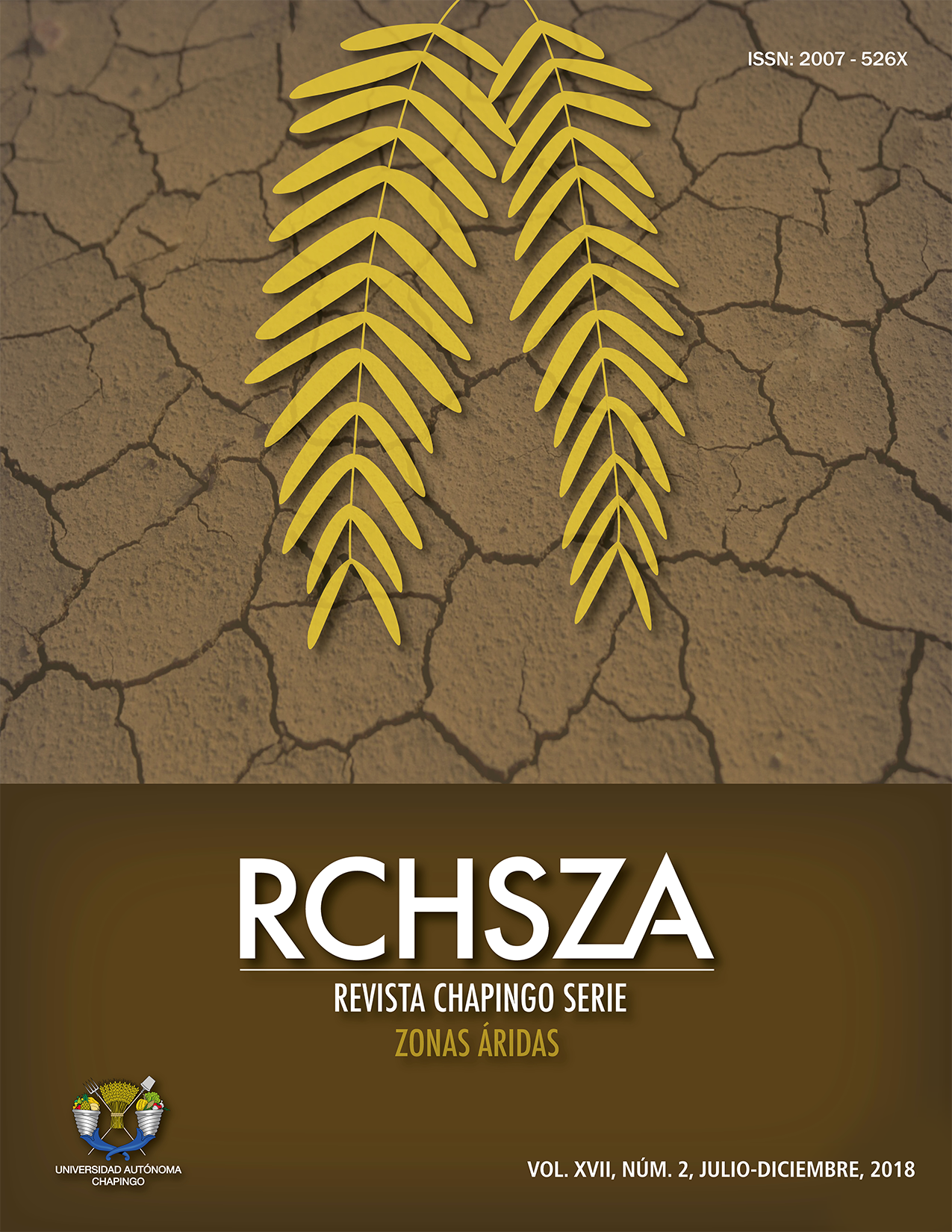Resumen
Los objetivos del trabajo fueron describir la estructura de las hojas mixioteras o cutículas de agave, así como su permeabilidad al agua y resistencia a la esterilización. Para ello, cutículas de hojas de Agave salmiana (grosor = 0.114 mm; densidad = 7.2 mg∙cm-2) se analizaron mediante Microscopía Electrónica de Barrido. Las imágenes revelaron una densidad promedio de 64 estomas∙mm-2. Los estomas son de tipo tetracítico con longitudes de 30 a 52 μm. La permeabilidad de la cutícula al agua mostró comportamiento lineal. La difusión de agua a través de la cutícula es mayor desde el lado externo que desde el lado interno. La cutícula de A. salmiana es un material que resiste calor húmedo al esterilizarse en condiciones de presión (121 °C y 15 lb in-2 durante 15 min). Los resultados sugieren que la cutícula de A. salmiana tiene perspectivas amplias para uso industrial.
Citas
Bernardino-Nicanor, A., Mora-Escobedo, R., Montañez-Soto, J. L., Filardo-Kerstupp, S., & González-Cruz, L. (2012). Microstructural differences in Agave atrovirens Karw leaves and pine by age effect. African Journal of Agricultural Research, 7(24), 3550-3559. doi: https://doi.org/10.5897/AJAR11.1185.
Bessire, M., Chassot, C., Jacquat, A. C., Humphry, M., Borel, S., MacDonald-Comber Petétot, J.,... & Nawrath, C. (2007). A permeable cuticle in Arabidopsis leads to a strong resistance to Botrytis cinereal. The EMBO Journal, 26(8), 2158-2168. doi: https://doi.org/10.1038/sj.emboj.7601658.
Chatterjee, S., Sarkar, S., Oktawiec, J., Mao, Z., Niitsoo, O., & Stark, R. E. (2012). Isolation and biophysical study of fruit Cuticles. J. Vis. Exp. (61), e3529. doi: https://doi.org/10.3791/3529.
Domínguez, E., Heredia-Guerrero, J. A., & Heredia, A. (2011). The biophysical design of plant cuticles: an overview. New Phytologist, 189, 938-949. doi:10.1111/j.1469-8137.2010.03553.X.
Heredia, A. (2003). Biophysical and biochemical characteristics of cutin, a plant barrier biopolymer. Biochimica et Biophysica Acta (BBA)-General Subjects, 1620(1-3), 1-7. doi: https://doi.org/10.1016/S0304-4165(02)00510-X.
Kunst, L., Jetter, R., & Samuels, A. L. (2008). Biosynthesis and transport of plant cuticular waxes. Annual Plant Reviews, 23, 182-255. doi: https://doi.org/10.1002/9780470988718.ch5
Nobel, P. S. (1994). Remarkable Agaves and Cacti. Oxford University Press, Oxford.
Reina-Pinto, J. J., & Yephremov, A. (2009). Surface lipids and plant defenses. Plant Physiology and Biochemistry, 47(6), 540-549. doi: https://doi.org/10.1016/j.plaphy.2009.01.004.
Suh, M. Ch., Samuels, A. L., Jetter, R., Kunst, L., Pollard, M., Ohlrogge, J., & Beisson, F. (2005). Cuticular lipid composition, surface structure, and gene expression in Arabidopsis stem epidermis. Plant Physiology, 139(4), 1649-1665. doi: https://doi.org/10.1104/pp.105.070805.
Taiz, L., & Zeiger, E. (2006). Fisiología Vegetal. Universitat Jaume. Vol. 10. Ciencias Experimentales, 1338 pp, ISBN 8480216018, 9788480216012.
Trejo, V., Aragón, N., & Miranda, P. (2001). Estimación de la permeabilidad al vapor de agua en películas a base de quitosán. Revista de la Sociedad Química de México, 45(1), 01-05.
Vargas-Rodríguez, L., Pérez-Nieto, A., Arroyo-Figueroa, G., Gallegos-Álvarez, M.M., & Flores-Rodríguez, E. (2017). Cuticle of prickly pear: structure and biological function. XXVI International Materials Research Congress, August 20-25, Cancún, Mexico.

Esta obra está bajo una licencia internacional Creative Commons Atribución-NoComercial 4.0.
Derechos de autor 2018 Revista Chapingo Serie Zonas Áridas



